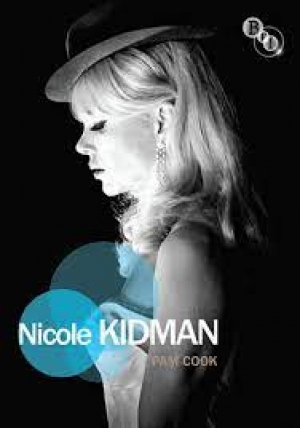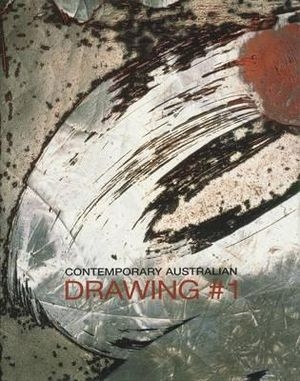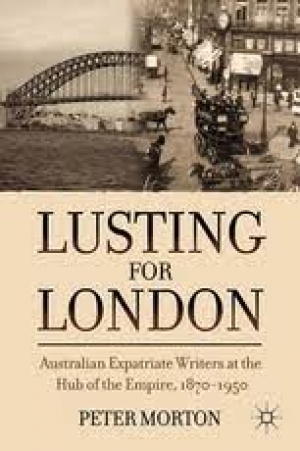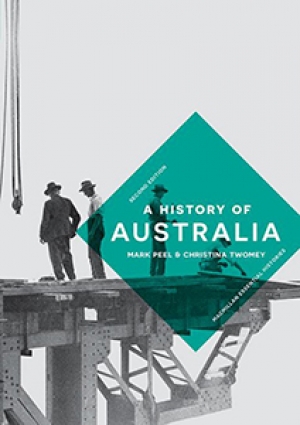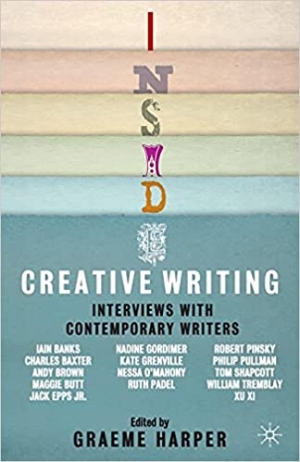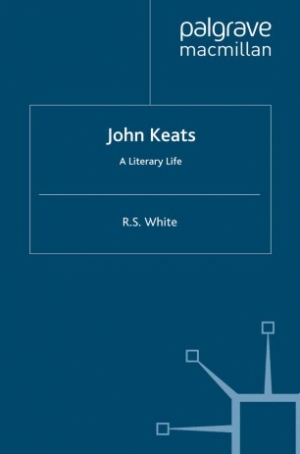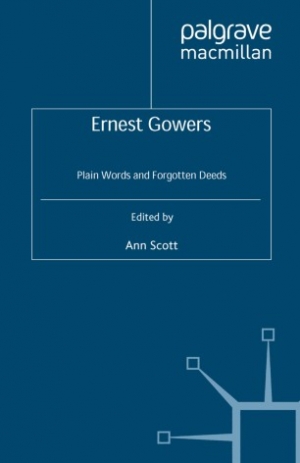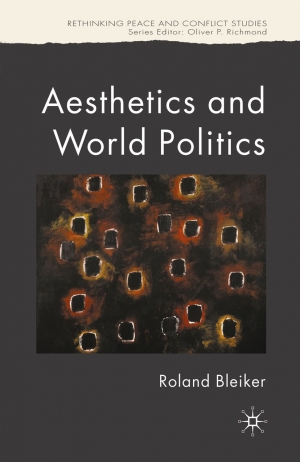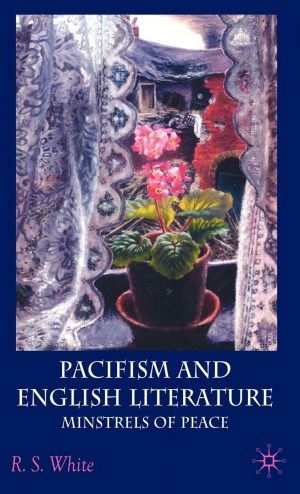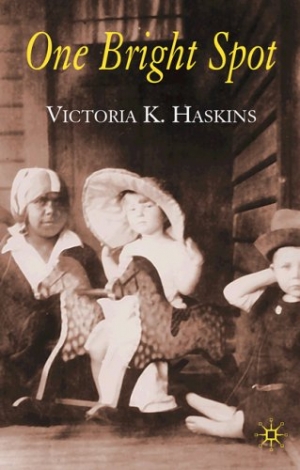Palgrave Macmillan
Francesca Sasnaitis reviews 'Nicole Kidman' by Pam Cook
‘Will the real Nicole Kidman please stand up?’ Many readers will remember that line from the television game show Tell the Truth, in which celebrities were required to guess which of three contestants was the ‘real’ person. Pam Cook tells us that our ‘search for veracity is doomed to failure’ because, in this case, the celebrity’s identity is a fragmentary and contradictory media construct.
... (read more)Justin Clemens reviews 'Contemporary Australian Drawing #1' by Janet McKenzie, with Irene Barberis and Christopher Heathcote
Just because something is being done right now doesn’t make it contemporary. On the contrary, the predicate ‘contemporary’ in contemporary art is the name for a problem, not a clarified or self-evident state of affairs. As Boris Groys puts it, ‘This is because the contemporary is actually constituted by doubt, hesitation, uncertainty, indecision – by the need for prolonged reflection, for a delay.’ Such experiences, however, are not especially high priorities in the world of corporate rationalisation.
... (read more)Lucy Sussex reviews 'Lusting for London: Australian Expatriate Writers at the Hub of Empire, 1870–1950' by Peter Morton
Until recently, there was a prevailing attitude that to succeed as a professional author one had to go into exile. The small Australian market could not support a writing career; it was necessary to travel abroad and court a larger readership. Because Australia was a British colony, the obvious destination was London, heart of empire.
... (read more)Frank Bongiorno reviews 'A History of Australia' by Mark Peel and Christina Twomey
The product under consideration is Shist.’ So began New Zealand historian Keith Sinclair’s discussion of short histories in 1968. His irreverent diminutive is still occasionally heard among professional historians of a certain age. It is less often recalled that Sinclair was defending the worth of the short history against those who might think ‘Shist beneath their dignity’. After all, Sinclair was himself the author of a fine short history of New Zealand, and he was contributing to a collection of essays in honour of W.K. Hancock, who had arguably produced the most distinguished – and certainly the most influential – short history of Australia up to that time.
... (read more)Ruth Starke reviews 'Inside Creative Writing: Interviews with contemporary writers' edited by Graeme Harper
Graeme Harper is a big name in the academic field of creative writing. He was the first in Australia to be awarded a doctorate in creative writing (UTS, 1993) and followed that with a PhD from the University of East Anglia; he has held professorships in creative writing in the United Kingdom, Australia, and the United States. He edits journals and writes textbooks on creative writing; his curriculum vitae lists more than seventy-five keynote addresses given on the subject, and thirty-one grants and fellowships. As Brooke Biaz, he also writes fiction. How does he find the time? Any academic will confirm that nothing so effectively limits one’s own creative writing output as does teaching the subject.
... (read more)In Elements of Criticism (1762), the Scottish philosopher Lord Kames writes of the remarkable congruence between real presence, the product of our ‘external senses’, and ideal presence, which appears when art presents something so vividly to our ‘internal’ senses that we forget that it is not actually before us. Ideal presence, he writes, is like a‘waking dream’, the appearances of which are indistinguishable from real presence while we are within its spaces. For readers who associate immersive realities with modern digital media, Kames’s argument is surprising, even though it could be argued that in the twenty-first century literature is still the most powerful medium available for producing immersive realities. Kames assumes that literature’s ‘waking dreams’ will be judged by the standards of the actual world; but as early as the last decades of the eighteenth century and first decades of the next, the development of genres such as Gothic fictions, coupled with the emergence of new entertainment media such as the panorama and phantasmagoria, had drawn attention to the extent to which ideal realities – ‘fictitious entities’ and ‘imaginary nonentities’, in Jeremy Bentham’s terminology – could shape rather than simply represent the real. This is the cultural context in which Keats’s life (1795–1821), dilemmas and oeuvre make sense.
... (read more)Graeme Powell reviews 'Ernest Gowers: Plain words and forgotten deeds' edited by Ann Scott
Ernest Gowers is remembered, if at all, for the writings on the English language which he undertook towards the end of his life. In 1948, at the request of the British Treasury, he wrote a small book called Plain Words. It was intended for the use of civil servants, not all of whom appreciated it, but it attracted a far wider audience, sold in huge numbers, and has never been out of print. An expanded version, entitled The Complete Plain Words, appeared in 1954. Subsequently, the Clarendon Press asked Gowers to produce a revised edition of H.W. Fowler’s Modern English Usage (1926). He laboured on the task for nine years, completing it at the age of eighty-five.
... (read more)Manfred B. Steger reviews 'Aesthetics and World Politics' by Roland Bleiker
Ever since Plato famously proposed to banish poets and their ‘embellished tales’ from his ideal Republic, the relationship between art and politics has been strained. On the negative end of the spectrum hovers the warning example of a failed Austrian landscape painter who proceeded to push the world into total war. What makes things even worse is that the remarkable appeal of Hitler’s ghastly vision in 1930s Germany owed much to the efforts of sympathetic artists such as Leni Riefenstahl or Gottfried Benn. But even more inspiring figures on the positive end of the spectrum – Václav Havel and Melina Mercouri come to mind here – usually fall from popular grace once they accept political office.
... (read more)It is tempting to become impatient, and to reach for a gun to resolve a problem, or a knife to cut a Gordian knot. As I write, the Burmese generals have been dithering and obfuscating rather than letting aid workers into their storm-ravaged country. The paranoid preservation of their honour and control bids fair to cause the death of tens of thousands of people. If the Burmese people cannot rise up to change this (and as poor, pacifist Buddhists, they are peculiarly ill equipped to overwhelm a shameless and violent régime), then we should surely invade, distribute the emergency aid, and replace the generals with responsible government. Some people only respond to violence, and surely justice demands this intervention.
... (read more)In 1993, when Victoria Haskins undertook research into the relationship between Aboriginal and white women, she was ‘plunged into the argument that white academics were only perpetuating colonialism by writing Aboriginal people’s history … that white Australians should not, could not, try to speak for Aboriginal people, nor try to represent the Aboriginal experience’. Left floundering by ‘the difficult politics of writing Aboriginal history as a white Australian scholar’, Haskins was unreceptive to her grandmother’s pleas to embark on the despised ‘trivial bourgeois pursuit’ of family history, dismissed as ‘middle-class … the province of mildly ridiculous ageing relatives, searching for the dates of their ancestors’ arrival in the colonies’. But curiosity about an old photograph of her grandmother as a fair-haired toddler with an Aboriginal nanny prompted her to root out her great-grandmother’s boxed papers, then languishing in an aunt’s garage.
... (read more)
